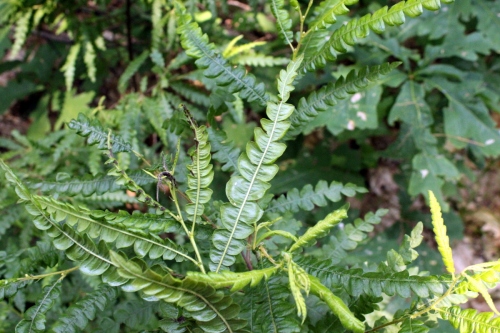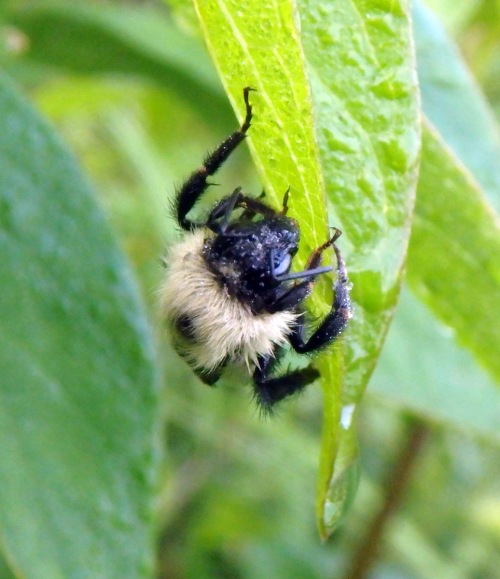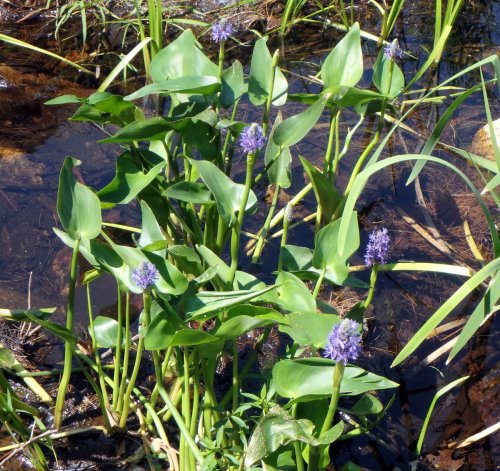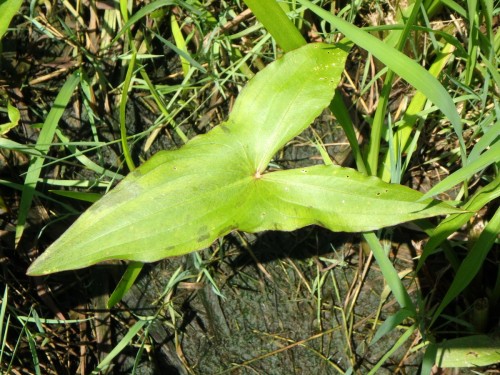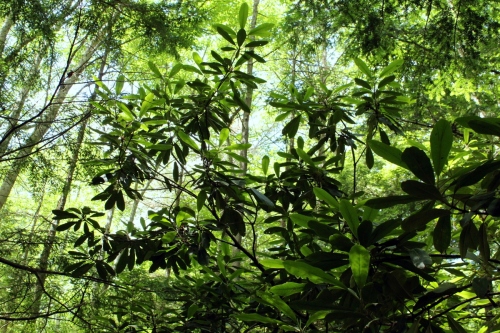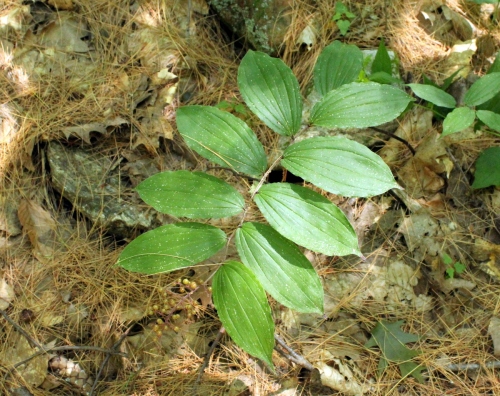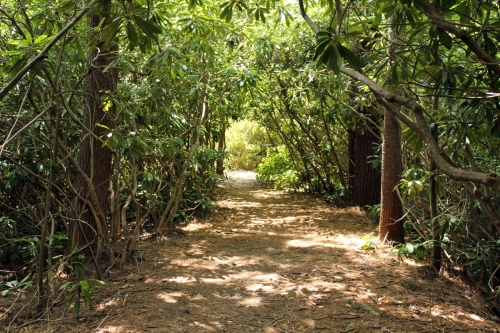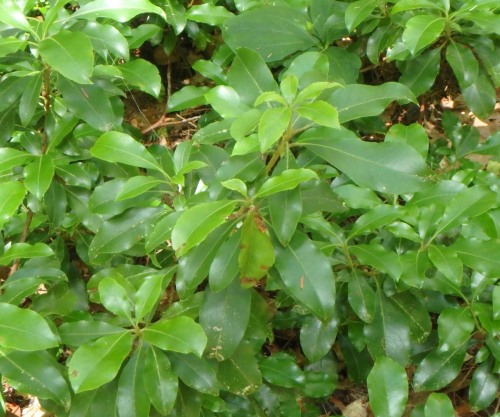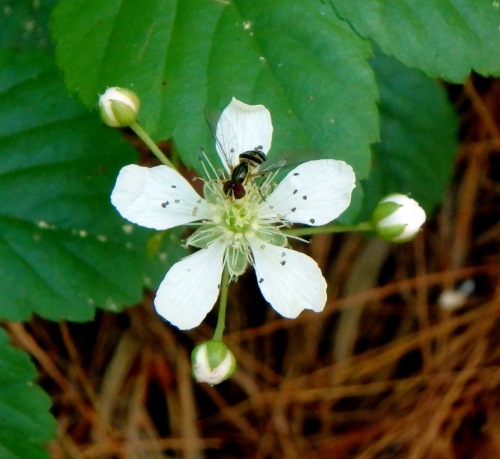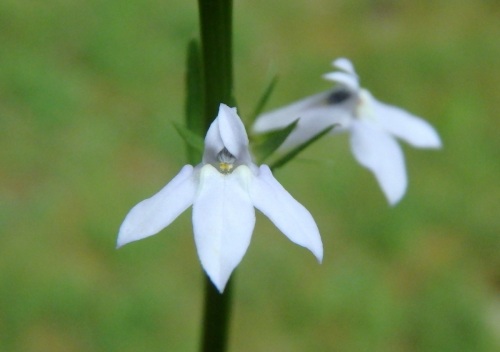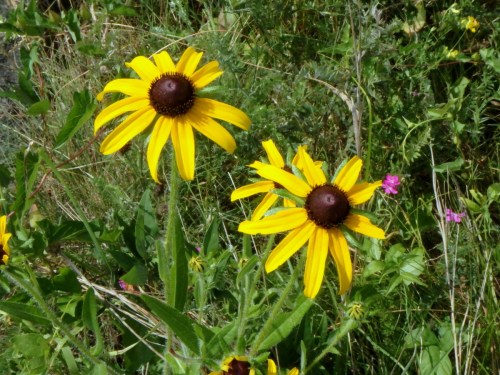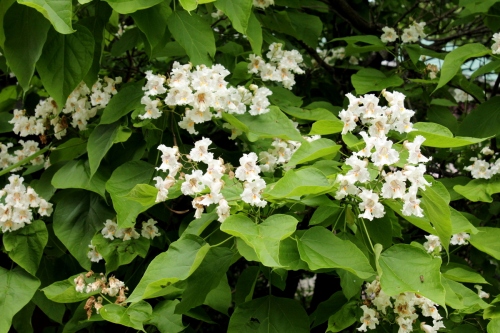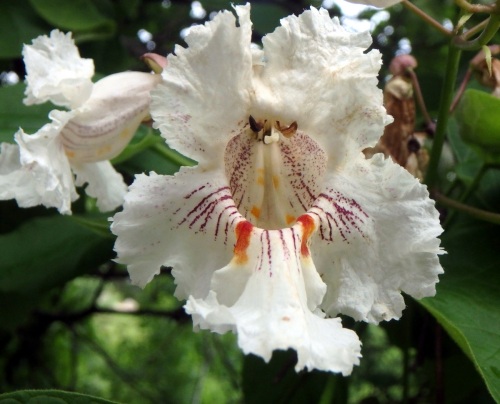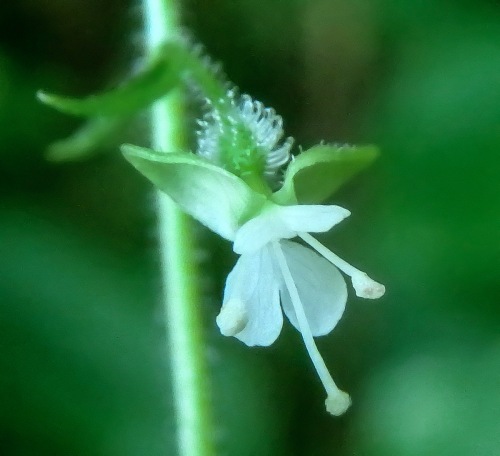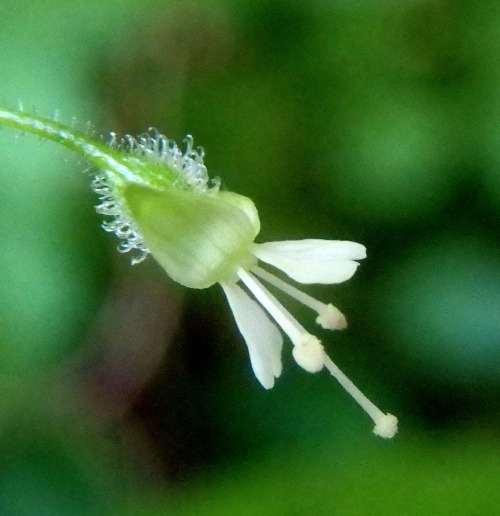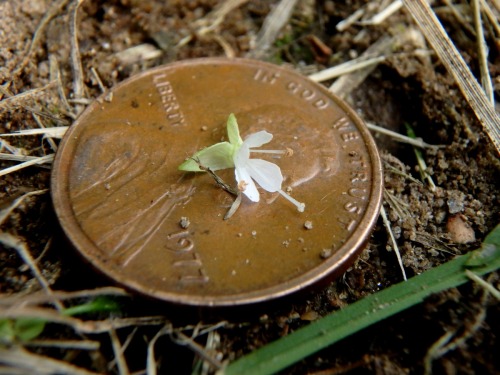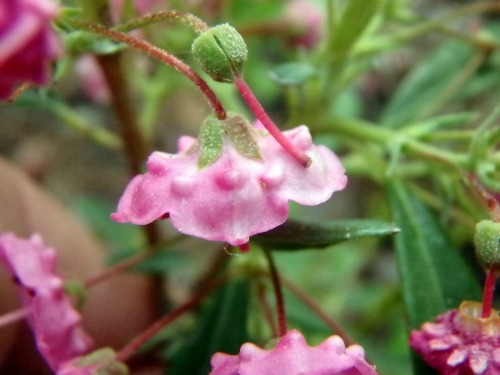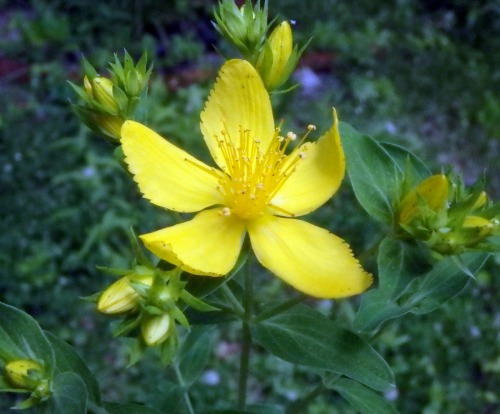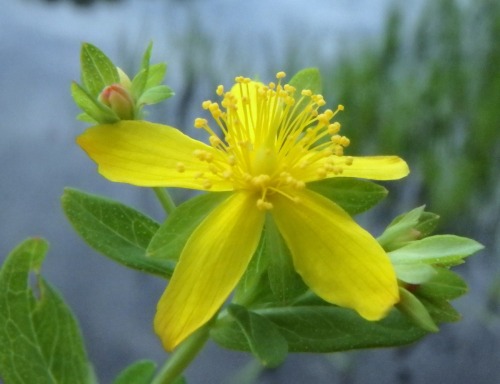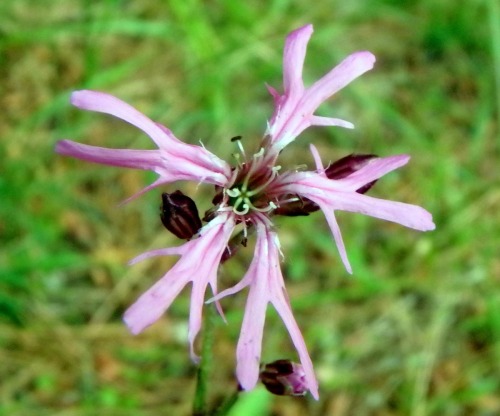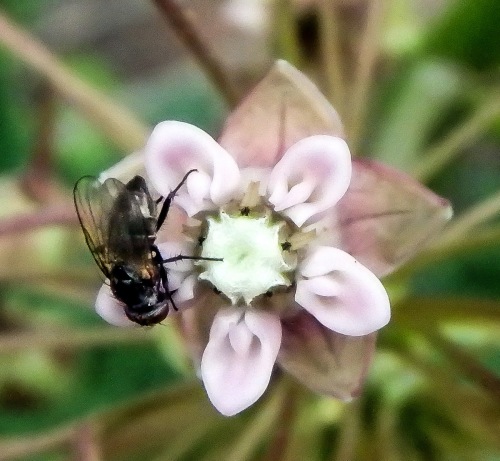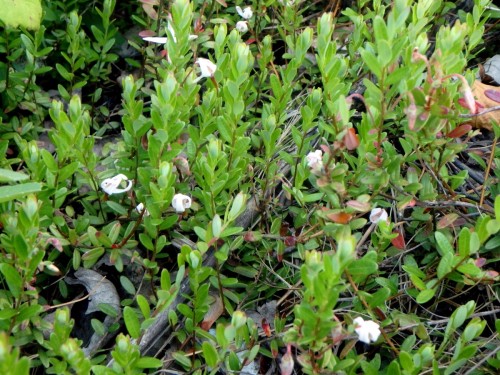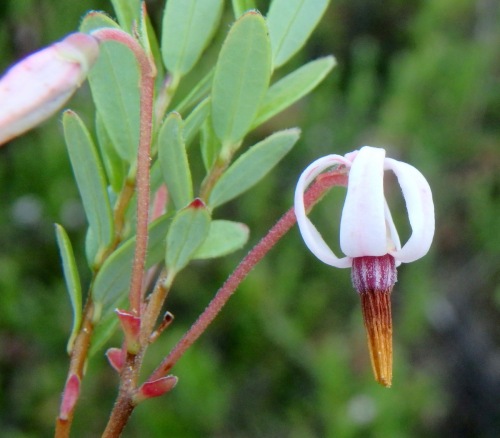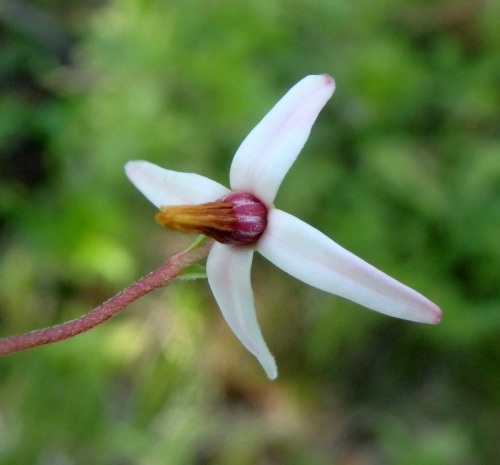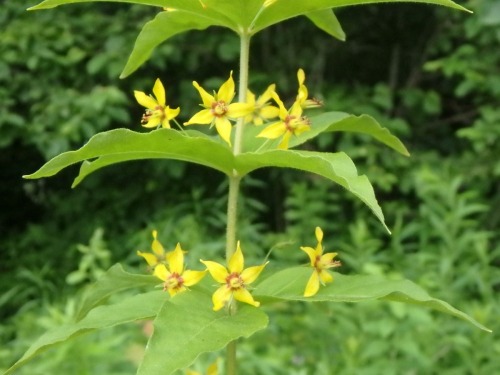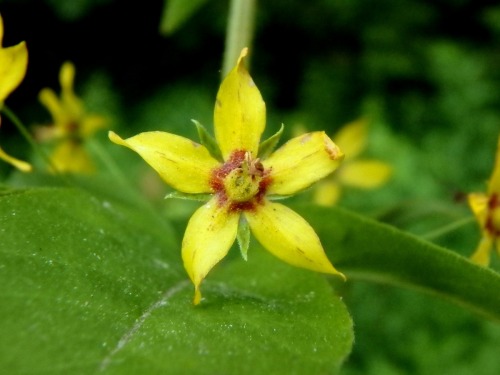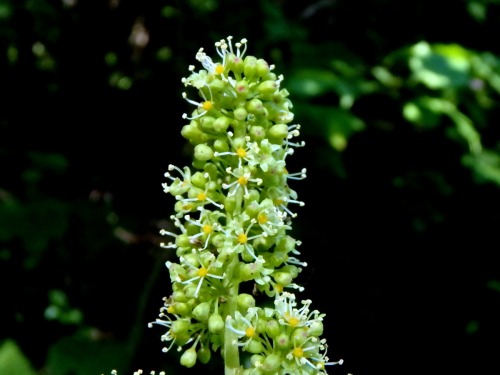Last Saturday the heat and humidity were supposed to return so I set off for one of my favorite rail trails. Since it was morning and the trail is mostly shaded I thought I’d be fine, but by the time I got back I was hot enough to complain about it. The heat has kept me indoors just once since I’ve been doing this blog and that was the weekend before this walk when the heat index reached 104 degrees F. The humidity level was so high it made it very close to unbearable, so I spent my time next to an air conditioner. At least on this day the humidity wasn’t bad.
Right off I started seeing flowers, including this aster. I decided long ago that life is too short to spend days or weeks trying to identify asters and goldenrods, so I don’t know its name.
Steeplebush I do know and I was happy to see it. It’s a cousin of meadowsweet and is in the spirea family (Spirea tomentose) like that shrub is. Sometimes it gets confused with meadowsweet (Spirea alba) but that plant is a very woody shrub with white flowers in flower heads that aren’t as long and pointed as these are. A dense coat of white wooly hairs covers the stem and the leaf undersides of steeple bush, and that’s where the tomentose part of the scientific name comes from. It means “covered with densely matted woolly hairs.” Five petaled, pink steeplebush flowers are about 1/16 of an inch wide and loaded with 5 pistils and many stamens, which is what often gives flowers in the spirea family a fuzzy appearance. Many different butterflies love these flowers. Native Americans used the plant medicinally in much the same way that we would use aspirin. I almost always find this plant at the water’s edge and this one grew by the drainage ditch alongside the trail.
Cattails also grew in the drainage ditch and I liked the way the sunlight played on this one’s leaves. Darkish green is their natural color and the light green / yellow parts are caused by sunlight. When a ray of sunshine falls on a single plant or other bit of nature I always pay attention, and I’ve seen some beautiful things by doing so.
To some people sweet fern (Comptonia peregrine) isn’t a very exciting plant and I have to say that I haven’t had much to say about it over the course of this blog, but it is interesting. Sweet ferns are usually found growing in gravel at the edge of roads or in waste areas. They are small; about 3 feet tall-and have a mounding growth habit. The leaves are very aromatic and the scent can travel quite a distance on a hot summer day. It is said that crushing the leaves and rubbing them on your skin will keep insects away, and you can also make sweet fern tea from the foliage like Native Americans did.
The leaves of sweet fern do look sort of fern like and that’s how it gets its common name. I often run my hands over the leaves to release the fragrance that is held in tiny resin dots. The fragrance is what it is named for; some compare it to soap, others to spices or fresh mown hay. It is a very unusual scent that smells clean and a bit spicy to me. Sweet fern comes from the same family (Myricaceae) as the bay laurel, which is where bay leaves come from.
Once the spiky bur like husk opens the seed of the sweet fern, called a nutlet, appears. Though the nutlets usually appear in clusters this example had just one. They’re very small at less than a quarter inch. Scientists have documented germination in seeds which had been in the soil for over 70 years and it is thought that seeds could still grow after lying in the soil for 100 years or more.
Hay scented fern (Dennstaedtia punctilobula) can grow in shade or full sun, so it was right at home along the trail. This fern gets its name from the way that it smells like fresh mown hay when you brush against it. The Native American Cherokee tribe used this fern medicinally to treat chills.
Stone walls are common along rail trails. It was a land owners way of telling the railroad where their right of way ended. Most of the walls along rail trails are very old.
This stretch of rail trail like many others in this area follows the Ashuelot river and you can get a glimpse of it every now and then. The embankment down to it is very high and steep though so actually getting near the river is all but impossible for me.
Some lucky homeowner has built a bridge right from his back yard to the rail trail. It’s easy to forget that these trails run so close to people’s homes but we shouldn’t forget. Just think how you’d feel if you had an endless procession of hikers, joggers, and bicyclists passing your house all day every day. It has to be annoying, so I don’t get upset when I see the occasional no trespassing sign.
In places the water in the drainage ditches had dried up, leaving multicolored mineral deposits behind.
You might have seen an acorn in the previous photo. All along the trail I heard the pfffft of them falling through the tree foliage. If I go by all the nuts and berries I’ve seen I’d guess that the animals will eat well this year.
Indian pipes (Monotropa uniflora) slowly turn their heads to the sky. Once they’re looking straight up at the sky that is the sign that they’ve been pollinated. They are also called ghost or corpse plants. Fresh stems contain a gel that Native Americans used to treat eye problems. The common name comes from the plant’s shape, which is said to resemble the pipes that the Natives smoked and the uniflora part of the scientific name means a single flower, which is all each plant has.
Here is a rarely seen (on this blog) view into an Indian pipe flower. At the tips of the 10 stamens surrounding the center stigma are the anthers, colored yellow, which contain pollen. The anthers are open and shedding pollen at this stage. In the center of the flower is the pollen-collecting stigma, which looks like a funnel between the yellowish stamens. Once pollinated each flower will eventually become a brown seed capsule. These capsules always look like beautiful little carved wooden flowers to me. Once they ripen they will split open into 5 separate parts to release tens of thousands of seeds to the wind. Each individual seed is only ten cells thick. Indian pipes are parasitic on certain fungi, which in turn are often parasitic on the roots of trees so in a roundabout way they get their food from trees.
Pretty little fringed loosestrife (Lysimachia ciliate) is the last of the native yellow loosestrifes to bloom in this area. Great colonies of the knee high plant can be found along roadsides and wood edges, and along waterways. It might be confused with whorled loosestrife (Lysimachia quadrifolia) if the two plants bloomed at the same time, but in this area fringed loosestrife blooms later. The flowers on fringed loosestrife are about the size of a quarter and nod to face the ground. On whorled loosestrife they face outward. The leaf arrangements on the two plants are also very different.
Fringed loosestrife gets its common name from the fringe of hairs on its leafstalks, but sometimes the flower petals are also fringed like they are on this example. It’s a cheery, pretty plant that often gets overlooked because there is just so much in bloom at this time of year.
The prize for the strangest thing I saw out here on this day goes to this golf ball. I can’t imagine how anyone could play golf in a forest but maybe an animal stole it off someone’s lawn, I don’t know. It looked to be in new condition.
Before long I reached the trestle, where I stood for awhile thinking about how lucky I was to have a trail into the woods like this. It lets me see things that I’d never be able to see otherwise, like this stretch of river. If it wasn’t for the trail I’d have to bushwack my way through the woods or paddle upriver to get here. Thanks be to the snowmobilers who keep these trails open. They’re also the ones who add the wooden bits to the trestles so nobody drives their machines off them. That wouldn’t be good.
In this shot it doesn’t look like it would be much of a drop from the trestle to the river below.
But looks can be deceiving, and when I add some people in kayaks to the mix you can see that it would indeed be quite a drop. When I was a boy a friend of mine fell from the top of a trestle, which he had climbed, into the river. He lived to tell about it but I never saw him climb to the top of another one. The kayakers by the way were still, pondering what to do about that big pine tree you can see up ahead that has fallen all the way across the river.
As the river bank showed, the water level is way down, but I’ve grown up on this river and I’d be surprised if it wasn’t. If you want to walk across the Ashuelot River August is the time to do it in this area. I used to walk in the river when I was a boy, looking for old bottles. I found a lot of them too, and sold them to local bottle collecting clubs. That was when I learned what it was like to have money in my pocket and it was what led me to work at proper jobs, and that was how I lost my connection to nature for many years. Thankfully I was able to get it back.
Away from the tumult of motor and mill
I want to be care-free; I want to be still!
I’m weary of doing things; weary of words
I want to be one with the blossoms and birds.
~Edgar A. Guest
Thanks for coming by.





